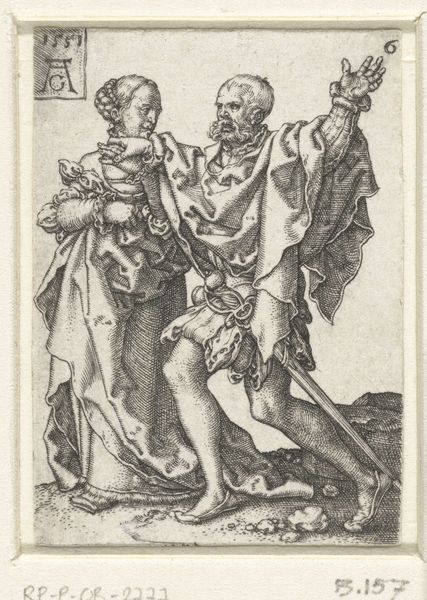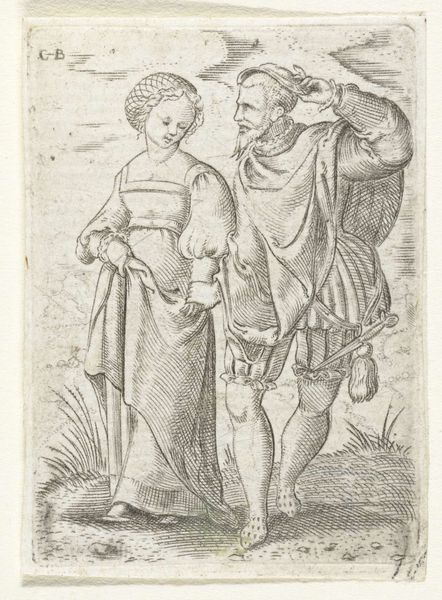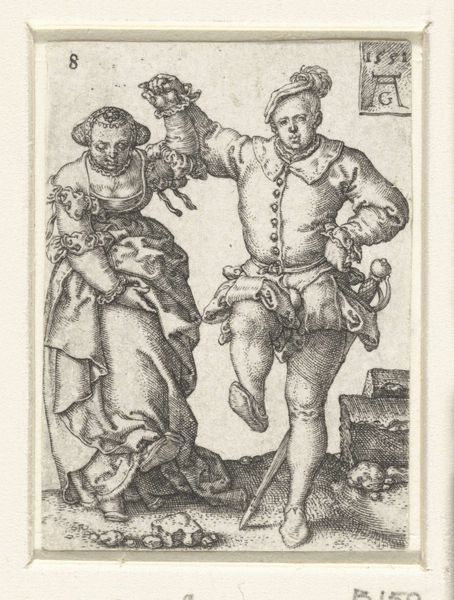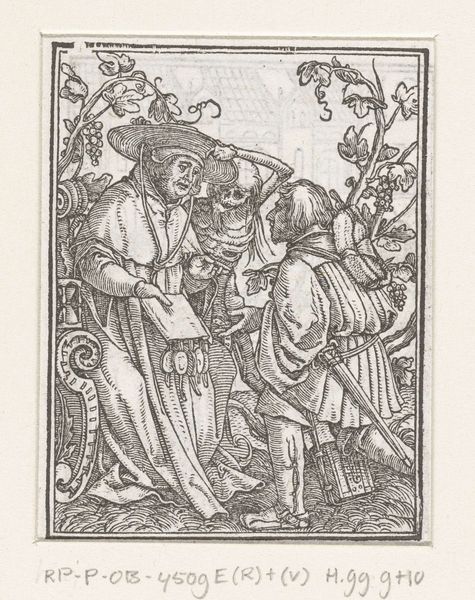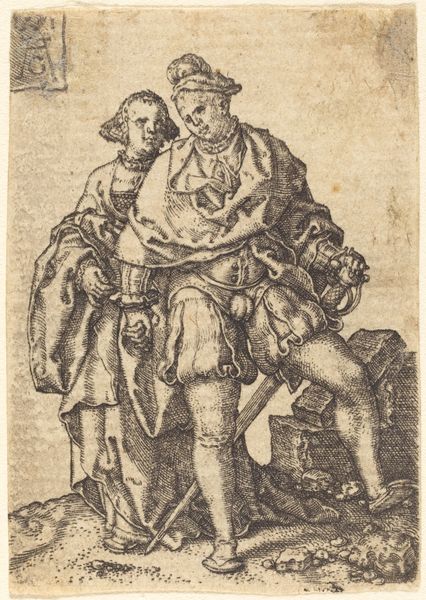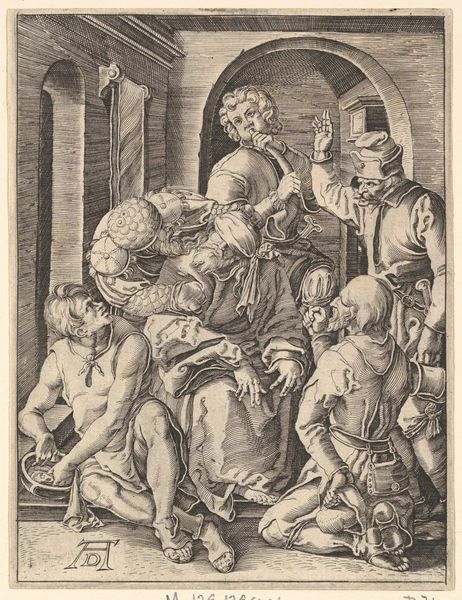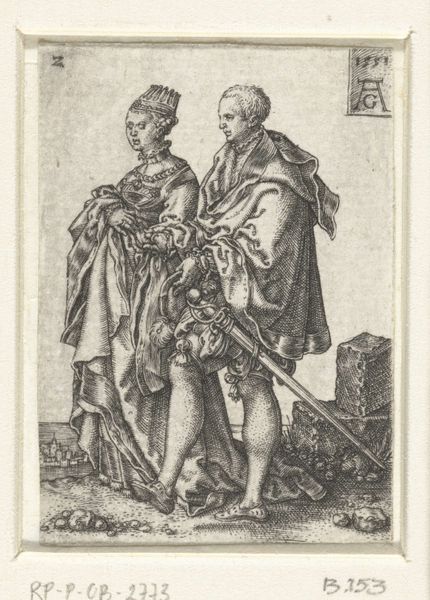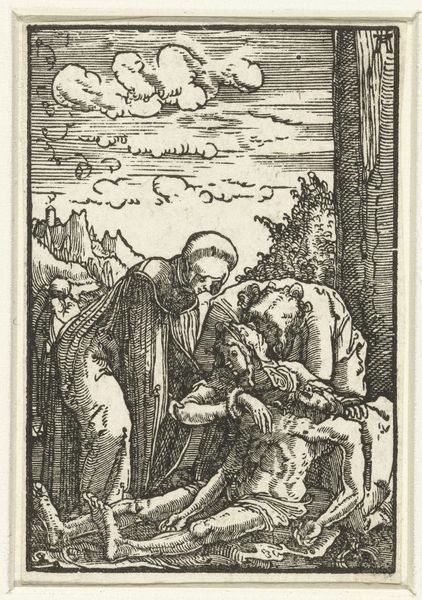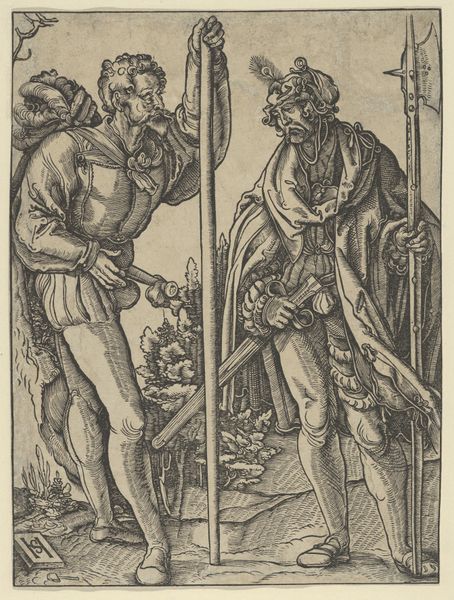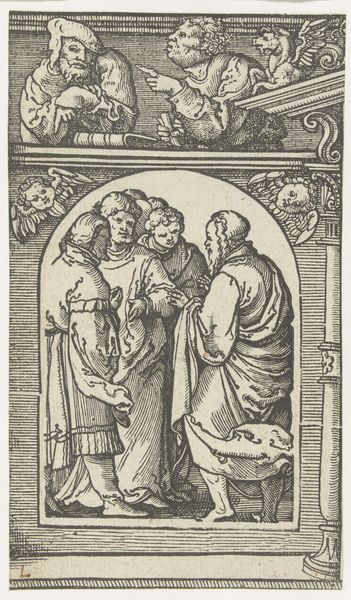
print, intaglio, engraving
#
portrait
# print
#
intaglio
#
old engraving style
#
mannerism
#
figuration
#
history-painting
#
engraving
Dimensions: height 54 mm, width 39 mm
Copyright: Rijks Museum: Open Domain
Editor: Here we have "Dancing Couple" by Heinrich Aldegrever, an engraving from 1551. The figures appear quite self-assured, even proud, displaying very elaborate clothing. I’m curious about what this image might say about social status in the mid-16th century. What’s your take on this piece? Curator: Well, considering Aldegrever's involvement in the Reformation, these images can be viewed through the lens of the changing social and religious landscape. These weren't straightforward depictions; they engaged with complex societal ideals. What do you notice about their positioning within the frame? Editor: They dominate the space, and their elaborate attire definitely draws attention. But, there's something a little stiff about their posture, maybe even a touch awkward. Was this kind of image meant for public display or something more private? Curator: Good question. Prints like this circulated widely, but their impact depended heavily on context. Think about the rise of print culture. It allowed for new modes of disseminating ideas, sometimes challenging the established elites and power structures through accessible imagery. Does knowing this alter your interpretation? Editor: Definitely! It’s easy to get caught up in the aesthetics, but framing this work within the social and religious shifts really enriches its meaning. These figures may be embodying a sort of ideal that reflects particular cultural values of the period. Curator: Exactly. And consider where it was shown and consumed, what that says about who had access to certain conversations happening then, about faith, about wealth, and ultimately, about power. Editor: I’m seeing this image with completely different eyes now. I realize I have to dig deeper into the social and political implications of this kind of art and how they shaped the cultural narrative. Curator: Precisely. Art is rarely made or received in a vacuum. Examining it through a historical lens always reveals much more than the surface image.
Comments
No comments
Be the first to comment and join the conversation on the ultimate creative platform.
